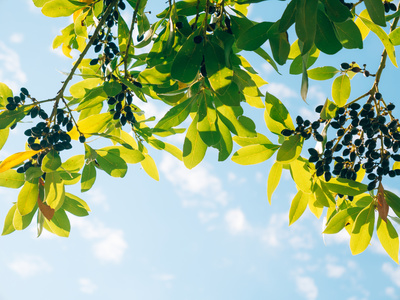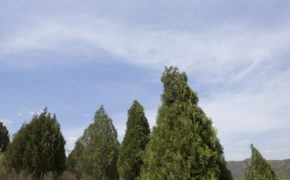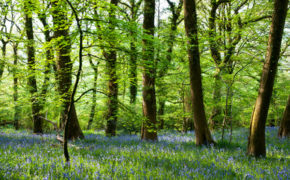
Get a quick no obligation quote It’s free and will only take a jiffy!
Bay Laurel Tree
Everything you need to know about the bay laurel tree, from identification tips to typical characteristics; how to spot disease and the best way to maintain a bay laurel tree.
The bay tree or bay laurel makes a popular hedging and topiary shrub thanks to its attractive glossy, aromatic leaves that stay green and therefore offer privacy year round. Of Mediterranean origin, this tree is famous for its culinary leaves that are used fresh or dried in cooking to flavour casseroles, soups, bolognaises and other dishes.
You’ll often see the bay laurel tree formally and neatly clipped into eye-catching shapes on estate land, but it is an equally popular entrance plant that does very well in patio pots offering an elegant welcome to any home. In colder climes the bay tree will often be found as an indoor plant.
General Facts
| Known as | Bay laurel, bay tree, sweet bay, true laurel, Grecian laurel, laurel tree |
| Latin name | Laurus nobilis |
| Location | Southern Europe, Western Europe |
| Foliage | Evergreen |
| Lifespan | At least 50 years |
Characteristics
| Height | 7-18 metres |
| Spread | 8 metres plus |
| Appearance | A fast growing, ornamental, aromatic small tree or shrub that works well as a hedge or topiary plant and offers a typically Mediterranean appeal, especially when planted in patio pots. Bark is smooth and brown. |
| Leaves | Bay leaves are aromatic, leathery and glossy in appearance with matt undersides. They are large in size and will often reach up to 15cm in length. Can be used fresh or dried in various culinary dishes to infuse intense flavour, but leaves should not be picked until the plant is at least two years old. |
| Flowers | Flowers are small in size and give off a sweet scent. They appear in April and are white to pale yellow-green forming in dense clusters. |
| Fruit | Glossy, red coloured berries form on female plants once the flowers have faded, transforming to black in September. The seeds found within the berries are poisonous. |
| Found in | Formal gardens, residential patios, estate hedging; does well in coastal regions. |
Conditions
| Ideal soil | Any fertile and moist but well-drained chalk, clay, sand or loam soil is ideal for the bay laurel tree |
| Soil pH | Neutral, acid, alkaline |
| Aspect | North, south, east or west facing |
| Exposure | Full sun to partial shade. Needs stem protection in cold weather and should be sheltered from harsh winds to avoid damage. |
Threats
| Pests | Bay sucker, horse chestnut scale, soft scale and tortrix moth |
| Diseases | Powdery mildews, leaf spot |
Bay Laurel Trees and Wildlife
Any plant that forms hedging has great value to wildlife, especially birds and bats which appreciate the refuge offered as well as the juicy berries, and butterflies, hover flies, ants and pollinating insects are attracted to the flowers. Small mammals will also take cover within the privacy of the year-round dense greenery.
Bay Laurel Tree Symbolism and History
In Greek mythology, Daphne the female nymph turned was turned into a laurel tree by her father Ladon, the river god, in order to save her from the god Apollo’s affections.
Ancient beliefs dictate that the laurel tree held magical powers and an ability to ward off evil witchcraft and disease. For the Greeks, bay laurel was a medicine that would provide protection against diseases, in particular the plague.
Both the ancient Romans and Greeks would wear bay laurel wreaths as a status symbol and to denote victory.
Bay laurel was widely used as a herbal medicine for conditions such as colic, renal problems and stomach issues, as recorded by monks in ancient handwritten medical journals.
The Importance of Bay Laurel Trees
Bay leaves in their dried form are commonly used in Italian cooking but because of their sharpness they are usually removed from a dish before serving.
Ground bay leaves are used widely in stocks and soups and are more easily digested than their whole counterparts.
The berries of the bay laurel and the oil of the leaf are also used for culinary purposes, and the wood of the tree can be burnt for smoke flavouring for meat and fish.
The bay laurel leaf produces an essential oil that is used in aromatherapy although it is generally mixed with other oils such as eucalyptus and lavender or heavily diluted with a carrier oil so that it can be safely used to alleviate muscle aches and pains, sprains and rheumatic ailments. Bay laurel oil is also said to be good for stimulating hair growth and treating dandruff as well as having a positive effect on the lymphatic system.
When combined with eucalyptus oil, bay laurel essential oil can assist with respiratory related conditions such as persistent cough and bronchitis. It also acts as an effective digestive aid.
Caring for a Bay Laurel Tree
In general, the bay laurel does not require much pruning, although topiary shrubs will need fairly regular pruning in order to maintain their shape, and bay laurel hedges will need careful pruning to keep their neat shape. August is the prime time for pruning hedges and more established plants that have outgrown their space can be carefully pruned back to ground level in spring and will as a result sprout back very rapidly.
There are various things to look out for when growing a bay laurel tree. Leaf spots are a result of waterlogged roots or just general wet weather. If you are growing your laurel tree in a container then you will find this happens quite a lot if the compost has not been renewed for a while. If this is the case, be sure to repot into fresh compost that is well-drained.
If you spot yellow leaves then this could be a sign of nutrient deficiency which could stem from waterlogging or damage caused by cold weather. Winter cold and varying moisture levels in the soil can also cause the bark to peel, although bay laurel tree owners should not be overly alarmed by this. Simply prune any dead parts back to the green, healthy wood.
Other issues to look out for include brown leaves and infestations of insects including the bay sucker and soft and horse chestnut scale.
If you have a bay laurel tree that could do with some professional care and attention, why not talk to T.H. Tree Services? As fully qualified and extensively experienced tree surgeons, we can offer extensive knowledge and skill across all aspects of bay laurel tree care. For a free, no-obligation quotation, call us on 01268 642814 or get in touch here.
Amazing service from Mark and his team. We had a problem with Bamboo that had spread from a neighbours garden. Mark kept us informed with regular phone calls and images of how the work was progressing, as we were not present the house. 1st class job and a pleasure to do business with this company.
Thank you Colin and Gillian for your kind review. It was a pleasure to be able to clear the bamboo for you.








